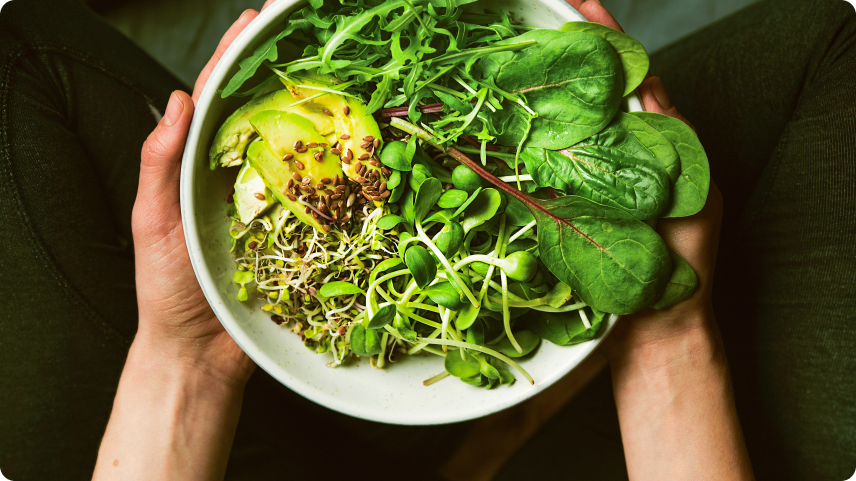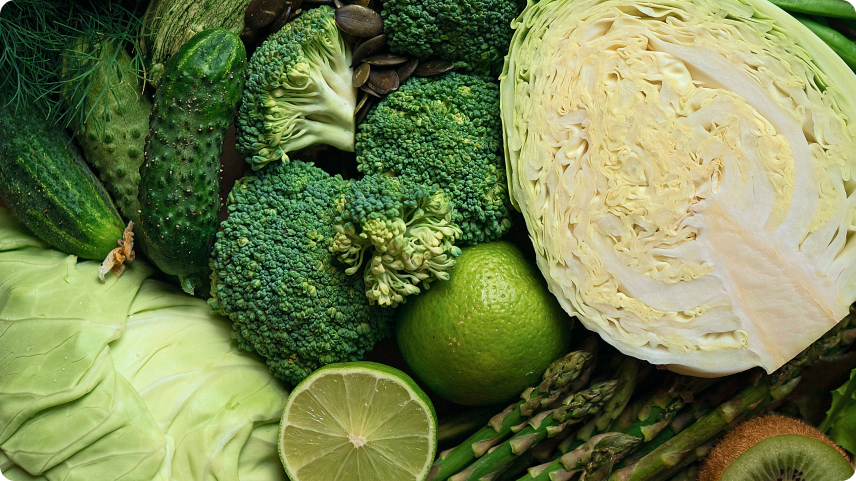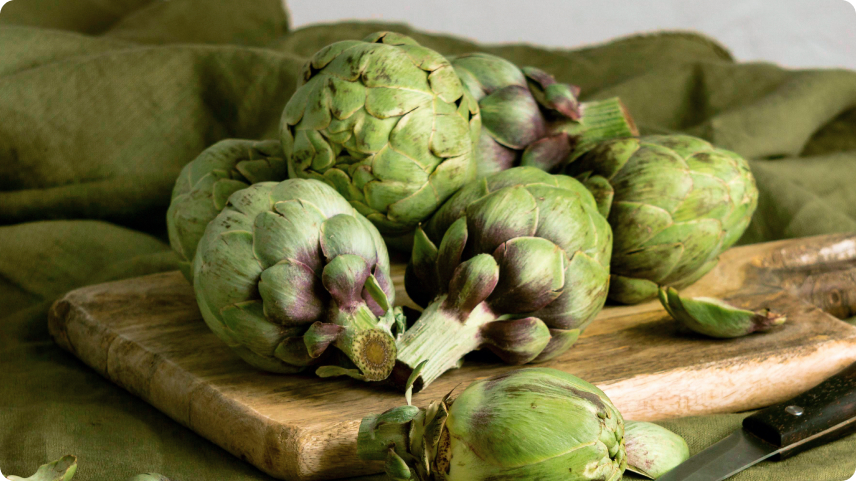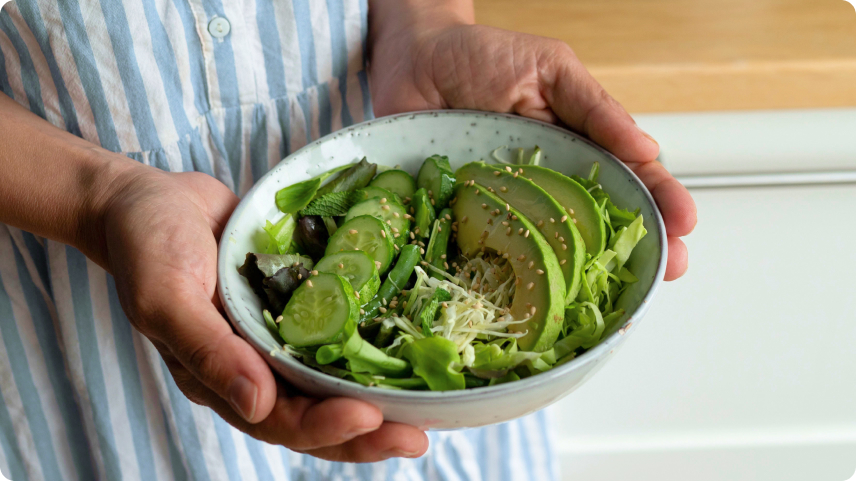High-Protein Vegetables: How to Eat Them

Before understanding how vegetables can contribute to your protein intake, it's good to understand why protein is essential in general.
Protein is a major macronutrient required for the body. Our body can make many other proteins from the amino acids we consume from foods. These have a variety of essential roles in the body, including:
- Supporting movement through muscle contraction
- Providing structure by forming skin, bone, muscle and other types of tissue
- Supporting gene expression
- Participating in our natural defenses
- Signaling. For example, many hormones and neurotransmitters are proteins
- Moving molecules around the body, such as oxygen
- Helping us grow
Therefore, it's a good idea to maintain adequate protein consumption in general.
Are Vegetables a Source of Protein?
Are there any vegetables that are rich in protein? Vegetables aren't typically considered a major protein source.
Instead, many people may turn to legumes and legume products for protein boost. These are things like soybeans, tofu, chickpeas, lentils and the various types of beans available on the market. These plant proteins are a healthy choice of protein; however, they may lack sulfur-containing amino acids. This means that typically, you’ll need to combine different types of plant protein to get the full spectrum of amino acids.
What about vegetables, though? Vegetables tend to have between 3% and 8% protein by weight, and while that may not be as much as legumes, it's more than you can find in fruit. They are typically good sources of leucine, lysine, phenylalanine, tyrosine and methionine.
While vegetables may not be the determining factor in building your muscle, they can be a great general addition to the diet. The smaller portions of protein in each serving of vegetables can build up over a day. In addition, vegetables have the following benefits for overall health:
- They may offer protective effects against common health concerns related to heart and metabolic health.
- They contain plenty of phytonutrients that are beneficial for health.
- They are a good source of fiber for gut health and a healthy microbiome.
- They are rich in vitamins and minerals that the body requires for optimal function.
You should get around 200-600 grams of vegetables a day for general health. Whether you're trying to bulk up, grow muscle, or simply increase your protein intake, include veggies in your meals. That way, you can support your general health and get plenty of protein in with every meal.
So, without further ado, let's discuss which high-protein vegetables you can start adding to your routine today.
Spinach
Spinach is a leafy green vegetable grown and consumed worldwide. It is rich in fiber, chlorophyll, and minerals, including zinc. In addition, it appears to have beneficial antioxidant and anti-inflammatory effects when eaten as an extract or powder. It is also rich in polyphenols and flavonoids.
One hundred grams of raw spinach provides almost 3 grams of protein, 2 grams of fiber and only 23 calories. On a calorie-to-protein basis, spinach is indeed one of the best protein-rich vegetables.
Spinach is super easy to use. You can use it as a base for a salad. Alternatively, spinach can easily be added to any sort of cooked meal to enhance its nutrition and protein content. You can also add spinach to smoothies for a boost of nutrients and protein in the morning.
If you want to further enhance your morning smoothie’s protein content, add a scoop of 100% Golden Whey Natural to it. With no artificial colorings or flavors, it’s just high-quality whey with about 23 grams of protein per serving.

Chinese cabbage
Chinese cabbage, also known as napa cabbage, is a vegetable with protein. Napa cabbage has just over 1 gram of protein per 100 grams of cooked cabbage. 100 grams of cooked napa cabbage also contains only 12 calories, so on a per-calorie gram, it is a high in protein vegetable.
If that still doesn’t sound like a lot, you can combine it with other protein sources to get quite a protein-rich meal.
In addition to protein, it's a great source of other nutrients. Chinese cabbage contains plenty of vitamin C, potassium, calcium, phosphorus, and magnesium. In addition, it contains trace metals like iron, zinc, manganese, and copper, which are essential for energy, immunity, and collagen synthesis.
In addition, you can use napa cabbage to make kimchi, which is a gut-friendly probiotic. For more information about probiotics, check out our post.
Asparagus
Many people associate the spring with asparagus. After all, these green stalks are in season for a few months over spring. But did you know that asparagus is another one of the vegetables that have protein in it?
It turns out that 100 grams of boiled asparagus comes in at 2.4 grams of protein and only 22 calories. In addition, this veggie boasts 2 grams of fiber in the same serving. Now that’s taking care of your gut and your gains at the same time!
Alongside the protein and the fiber, asparagus has some great health benefits. It contains a lot of phytonutrients, such as saponins, flavonoids, and other phenolic compounds, which have health benefits. The saponins in asparagus potentially have antifungal properties.
Asparagus is also rich in vitamins, especially the B-group vitamins. It contains large amounts of vitamins B6, B9, and B12, which are needed for a healthy cardiovascular system, cell division, and DNA synthesis. In addition to the B-group vitamins, it contains vitamins K and E. Asparagus is also rich in minerals such as selenium, iron, copper, zinc, calcium, magnesium, potassium, and phosphorus.
If you want to learn more about vitamins, check out our blog articles, where you can learn more about topics like:
- Vitamin D’s role in bone health and how to choose a supplement
- Folic acid, or vitamin B9 – what it is and why it’s important
- Do we get enough vitamins in the spring?
- Which vitamins do we lack in winter
- How vitamin B contributes to a healthy brain
- What role vitamin C plays in your muscle and bone health
Did you know that even the waste products of asparagus production, such as the roots and the inedible parts of the stems can be made into prebiotics? Asparagus is a great vegetable to include in your diet, regardless of your goals.
Broccoli
How do you feel about broccoli? While many may still think of broccoli as their childhood nemesis, this vegetable can offer some protein and other beneficial compounds.
100 grams of raw broccoli offers almost 3 grams of protein alongside 34 calories and 2.6 grams of fiber. The protein in this vegetable can help you reach your protein intake goals when combined with other protein sources in a meal.
But what else makes broccoli a healthy choice?
Broccoli contains many important nutrients, such as vitamins A, C, and K. It's also a good source of minerals like calcium, potassium, and iron. These vitamins and minerals can help support bone and immune health and heart function. Broccoli is also a great source of potent antioxidants and anti-inflammatory molecules that can support overall health. Its fiber content also makes it a great tool for weight management.
Adding broccoli to your meals is easy – simply boil or bake it and have it as a side!

Brussels sprouts
Many people are familiar with Brussels sprouts, which often appear on the table during Christmastime. 100 grams of boiled, unsalted Brussels sprouts contain 2.55 grams of protein and 2.6 grams of fiber. They're also only 36 calories, which makes them a good source of protein from vegetables when considering the protein-per-calorie ratio.
Like other cruciferous vegetables, Brussels sprouts are a great source of health-promoting compounds. They contain glucosinolates, which are great for overall health. In addition, they have plenty of vitamin C, K, folate, and carotenoids, which makes them a fantastic way to get essential nutrients.
Green Peas
Another high-protein vegetable is a type of legume. 100 grams of raw green peas have only 81 calories while providing 5.42 grams of protein and 5.7 grams of fiber. In addition to these great nutrients, they contain calcium, sodium, potassium, and group B vitamins. They are also rich in antioxidant compounds. Peas also benefit general health by supporting healthy blood fat levels and metabolism.
Green peas are a versatile addition to any diet, as you can add them to many dishes. In addition, due to their high protein content, many vegan protein powders are made with peas.
Artichokes
Artichokes are another vegetable high in protein. These vegetables provide around 3 grams of protein, 5.7 grams of fiber and only 53 calories in 100 grams of boiled artichoke. Therefore, they make an excellent addition to the menu if your aim is to get more protein in.
Alongside their high protein content, they contain a range of beneficial compounds. You may have heard artichoke extract being sold as a health supplement. Artichokes contain many phenolic compounds that are beneficial to health due to their antioxidant activity. In addition, artichokes contain vitamin C, niacin, folic acid, calcium, magnesium, potassium and sodium. Inulin, a type of fiber found in artichoke, also has prebiotic effects.
Therefore, artichokes are an excellent addition for those who would like to enrich their diet with beneficial nutrients.

Avocado
Everyone’s heard about avocado on toast – this breakfast has become a staple for many people. But this vegetable is also a great source of protein.
100 grams of avocado provides 160 calories, 2 grams of protein, around 7 grams of fiber, and plenty of healthy fatty acids. This vegetable also contains plenty of beneficial nutrients. For example, it is rich in folate, vitamin K, copper, and vitamin B5, as well as key phytochemicals that contribute to overall health. Avocados are great at reducing feelings of hunger, promoting a healthier microbiome, and may even support firmer skin.
Looking for new ways to add avocado to your diet? Check out our delicious recipes containing this high-protein vegetable:
- Mango avocado salsa for the summer vibes.
- Avocado toast with arugula greens.
- Crab, avocado and lettuce salad for a quick and healthy lunch – a great option during a hot summer day.

Mushrooms
Mushrooms on toast, anyone? Mushrooms are another vegetable that is high in protein, with 100 grams of raw white mushrooms containing 22 calories, 3 grams of protein and 1 gram of fiber. However, the protein content of mushrooms can vary by variety – oyster mushrooms have 3.3 grams of protein, for example, while raw shiitake contains 2.2 grams.
In addition to these, mushrooms contain other beneficial nutrients. They're a great source of B-group vitamins, phosphorus, selenium, copper, and potassium. Some mushrooms are grown under UV light, which helps increase their vitamin D content, so you may also get additional vitamin D from them. Other beneficial compounds in them have antioxidant and anti-inflammatory effects, too.
Potatoes
Potato lovers – rejoice! The humble potato is another good source of protein. 100 grams of raw potato can provide almost 2 grams of protein, alongside only 73 calories and around 14 grams of dietary fiber.
Potatoes are a great source of energy, potassium, magnesium, iron, zinc, vitamin C, and beneficial plant compounds. The exact amounts of valuable nutrients change according to the potato variety, so be sure to check the nutritional information on the potatoes you buy.
In conclusion, while vegetables may not be the first protein source that comes to mind, they can add substantial amounts of protein to your daily intake. Consider adding these high-protein vegetables to your routine to help you meet your protein requirements. Getting sufficient protein is essential for the health and proper functioning of the body. Make healthy choices and include healthy foods that are rich in nutrients to help yourself stay healthy and perform well on a daily basis.



